The Dutch golden age allowed landscapes to become an admired genre that was no longer practised simply as a backdrop to a historical or biblical scene. Views of the Netherlands did not have to be full of allegory to produce a compelling composition, the mass urbanisation of the country in the 17th century created an ever changing vista and a growing appeal of pastoral life.
 Above: a detail from View of Haarlem and the Haarlemmer Meer by Jan van Goyen, 1646
Above: a detail from View of Haarlem and the Haarlemmer Meer by Jan van Goyen, 1646
By the 1600s, as much as 70% of the population lived in urban areas such as Amsterdam, The Hague and Haarlem. There was now a growing demand for countryside views to adorn the walls of merchant houses in the now sprawling cities and towns.

A recent oil painting to visit our studio was a small oil on panel by Jacob Van der Croos, an uncle to the more famous Jacob Van der Croos who produced several well known paintings of The Hague and surrounding areas. As a family heirloom, it had always been on the wall of their parent’s home in Amsterdam – a cosmopolitan location that it was most likely produced for over four centuries ago.
The frame had become fragile and the surface of the painting was also dulled by dust and varnish discolouration, hiding the original colours. Above you can see the remarkable difference that was made after conservation work by our team. This article will cover the process of restoration and the important art historical themes within the painting’s composition.
 Above: a detail from Grainfields by Jacob van Ruisdael, 1660s
Above: a detail from Grainfields by Jacob van Ruisdael, 1660s
The tradition of Dutch landscape painting
As part of the Van der Croos family of artists, Jacob would have been influenced by the works of his brother and nephew, as well as contemporaries such as Jan van Goyen and artists of the Northern Renaissance such as Brueghel (the Elder and Younger) and Patinir.
 Above: a detail from The Harvesters by Pieter Bruegel the Elder, 1565
Above: a detail from The Harvesters by Pieter Bruegel the Elder, 1565
Whilst early Dutch and Flemish landscapes were ultimately focused on the glory of God’s creation and were packed full of biblical allegory, later pieces more often have a humanist or even patriotic tone to them. This was certainly the case with the work of the Van der Croos artists, whose inclusion of pastoral labourers and aspects of city life allowed for an emphasis on not only the natural beauty of the country, but a sense of a man’s ability to benefit humankind.
 Above: Drawing the Eel by Salomon van Ruysdael, 1650s
Above: Drawing the Eel by Salomon van Ruysdael, 1650s
Jacob and Anthonie Jansz van der Croos were contemporaries of Jacob van Ruisdael (1629-1682), a famous Dutch landscape painter who produced various scenes including cityscapes and views of rural life. Ruisdael’s artwork typically has a large percentage of the composition dedicated to the sky, sometimes taking up three quarters of the canvas – producing a sense of both religious and secular power from the heavenly clouds to the man-made structures below.
 Above: a detail from Wheat Fields by Jacob van Ruisdael, 1670
Above: a detail from Wheat Fields by Jacob van Ruisdael, 1670
Further to religious and secular themes, there was a sense of national pride in the beauty of a typically Dutch landscape, often featuring windmills and a display of abundant rural industry or rapid metropolitan growth.
 Above: a detail from A View of The Hague from the Northwest by Jan van Goyen, 1647
Above: a detail from A View of The Hague from the Northwest by Jan van Goyen, 1647
This patriotism was in part due to an ongoing struggle with Spanish rule that had resulted in the Dutch Revolt between 1566 and 1648, leading to the emergence of the Dutch Republic. This area encompassed much of the area we know today as The Netherlands and would have been fresh in the mind of artists working in the era, as well as their patrons.
 Above: a detail from A Panoramic Landscape with a Country Estate by Philips Koninck, 1649
Above: a detail from A Panoramic Landscape with a Country Estate by Philips Koninck, 1649
The painting
We can assume from the quick and painterly brushstrokes that this painting was a preparatory oil sketch, intended to be part of a full composition that would be completed at a later date. Although painting out of doors ‘en plein air’ was not possible until the 19th century due to the complications of mixing paint and other studio necessities, it can be imagined that Van der Croos saw this scene himself and perhaps sketched it, before going to his studio to record it quickly in oil paint.

The small panel appears at first glance to be a simple landscape captured from a low viewpoint, allowing the sky to take up much of the upper half. A hay bail or small cottage is in the distance, set amongst a wooded area that allows the trees to frame it. The sky is blue but partially clouded, suggesting a warm summer day. When the painting is analysed in more detail, we can see that there is a small figure resting on top of a pile of hay in the foreground.
The rich earth tones in the lower left feature a broken cart wheel, we can imagine this became stuck due to recent rainfall. The muddy path is leading away towards the viewer, giving a sense of movement to the scene as it trails off towards a presumed town or city.
 Above: a detail from the lower left of the painting
Above: a detail from the lower left of the painting
Although small in size and completed as an oil sketch, the painting has several clear symbolic features. Firstly, the recent rain – as suggested by the clouds and broken wheel in the mud. This would have aided in the growth of the harvest, a reference to the power of nature and in turn a religious element to rural life. The man sits upon a mount of hay as if to conquer it after a hard day’s work, providing a humanist perspective.
 Above: a detail of the figure on a haystack
Above: a detail of the figure on a haystack
The small house or tree-framed hay bail in the distance adds to an idea of a calm and romanticised pastoral life beyond the constraints of being an inner city aristocrat, appealing directly to the intended patron of the piece. This distant feature also allows the artist to play with a sense of perspective, a typical feature in Dutch art. All of these ideas together produce a perfect insight into the philosophy of their historic audience and the central themes behind 17th century landscape paintings.
 Above: a detail from the panel
Above: a detail from the panel
The restoration
Upon assessing the painting and frame in photographs, the primary recommendations from our team were to carefully remove layers of dirt, discolouration and contaminants. This would require a surface clean and varnish removal by our easel painting conservators. The frame also required areas of re-moulding due to decorative losses, as well as stabilisation of the mitre joins. The new areas of the frame would need to have their patina aged in with the rest of the frame, finished off with a gentle buff of gold leaf and wax.
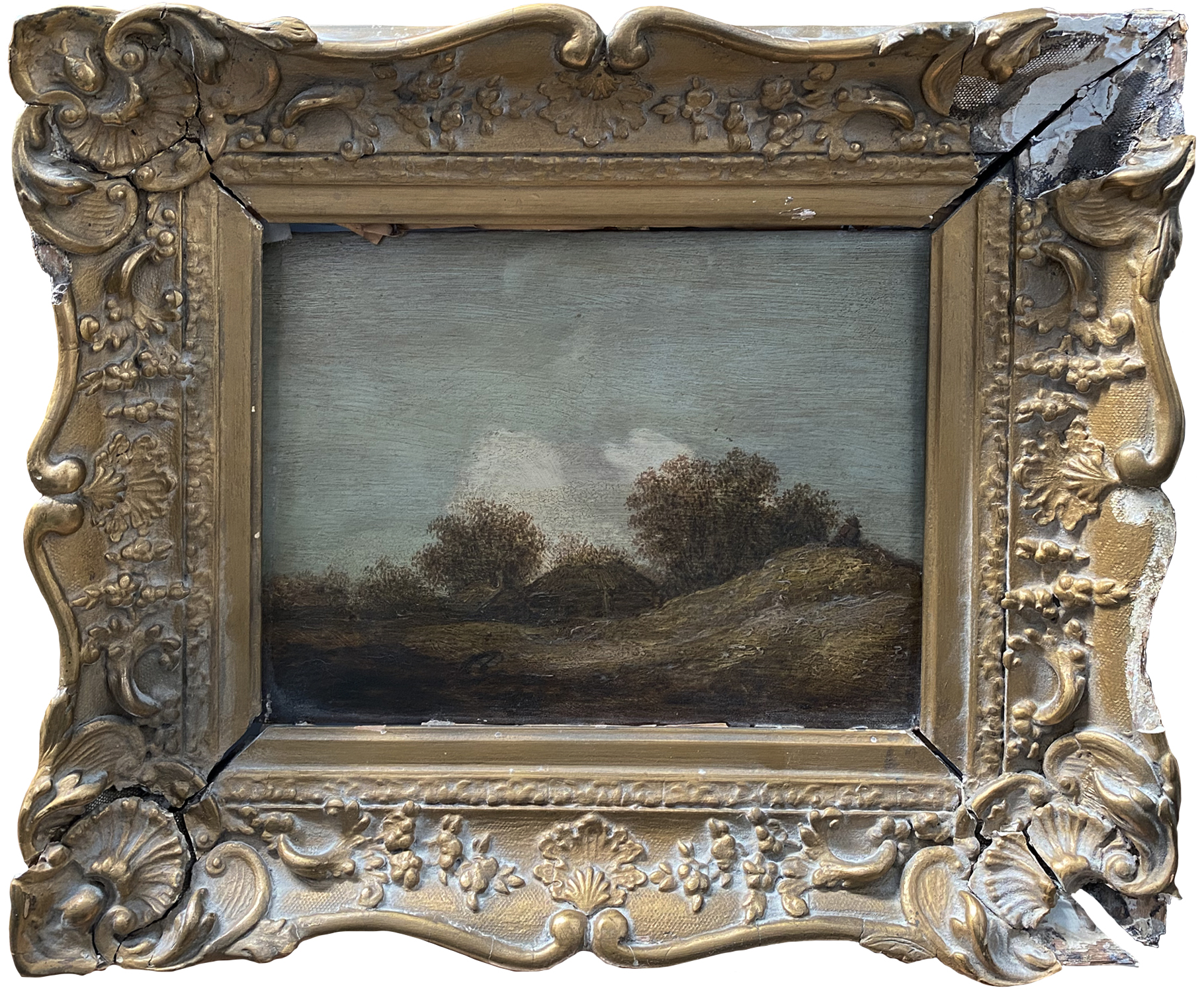
When the painting came to our studio, our conservators were able to offer a more in depth assessment of the painting’s overall condition. They pointed out a couple of areas where additional restoration was required to provide the most comprehensive conservation. It was made evident that there was consolidation required around the edges of the panel, as the paint layer had abraded against the unstable frame. This could be completed by gently filling and retouching the weakened areas with conservation-appropriate materials.
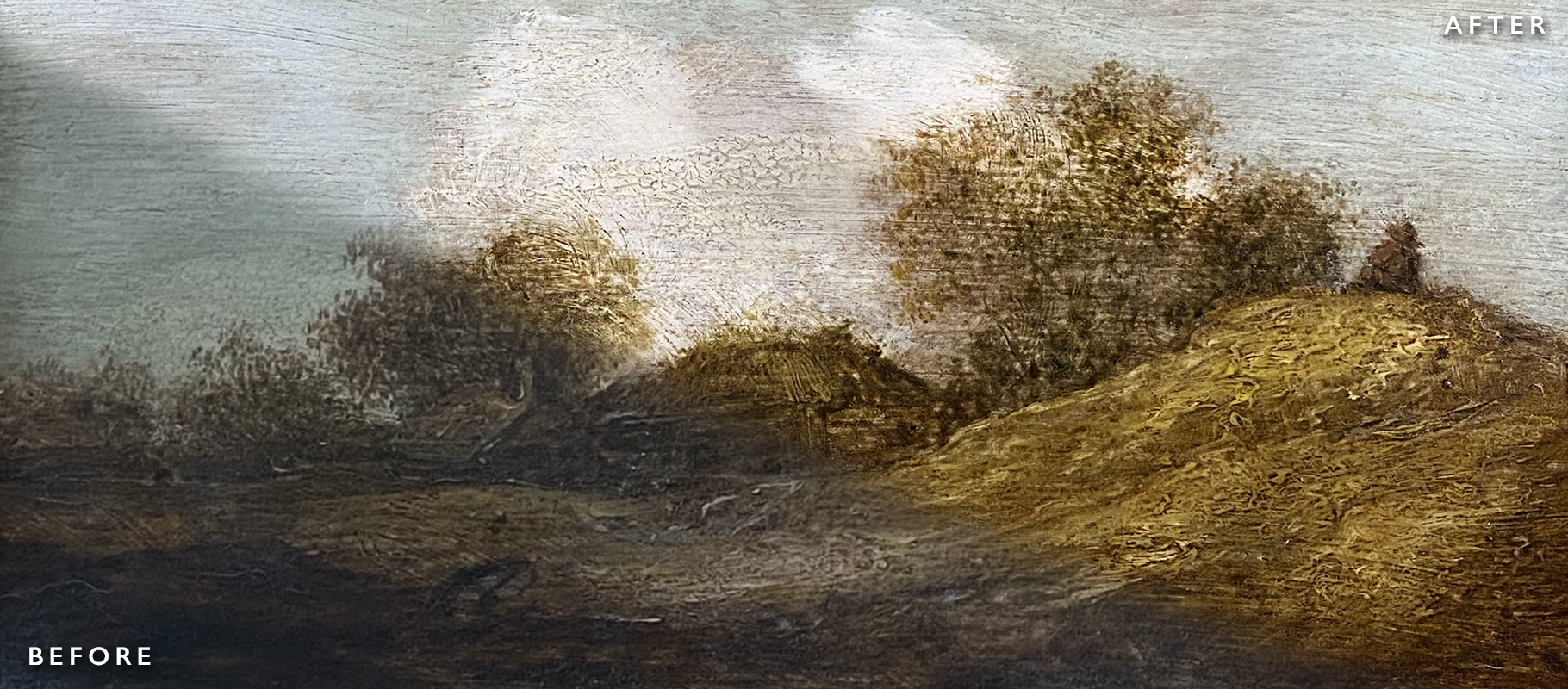
The surface cleaning and varnish removal allowed for more of the original details to become visible. This was especially the case for the darker area, where a wooden cart wheel in the earth was more evident. The white clouds, blue sky and contrasting yellow hay were also far more vibrant in their appearance.
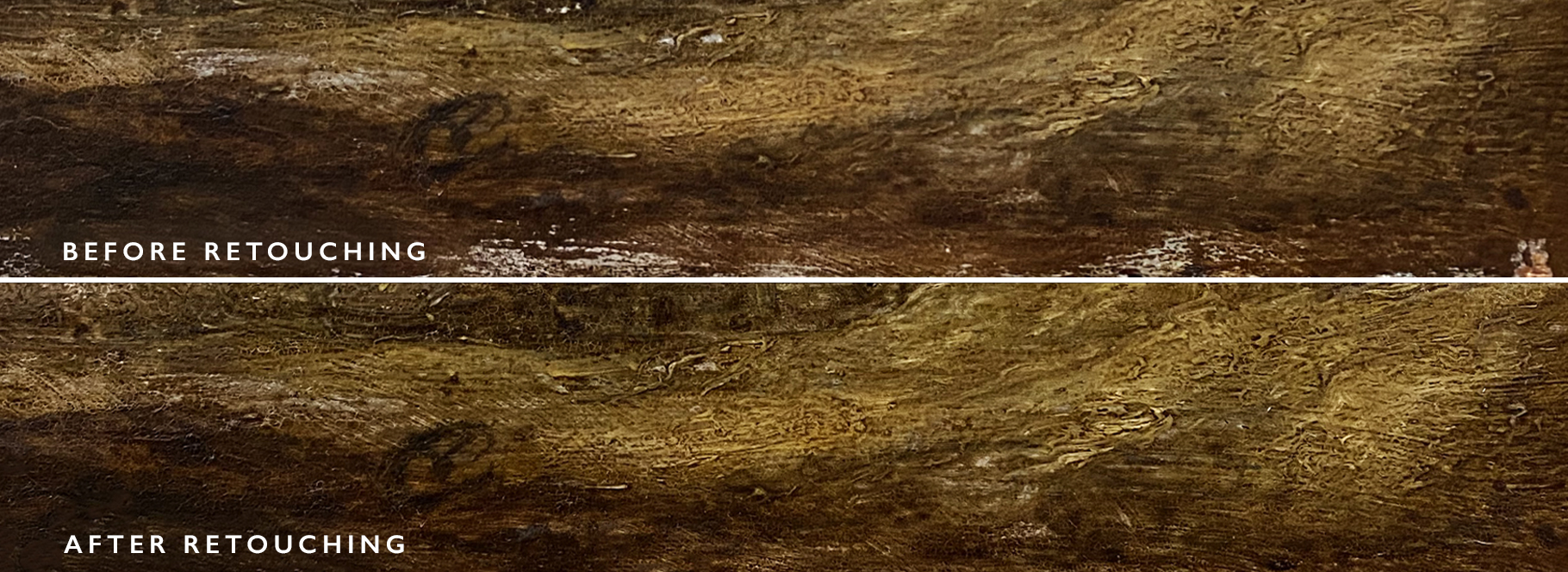
The varnish removal and surface clean revealed the losses around the edge more clearly. The lost areas were sensitively retouched with tiny amounts of specialist pigment by our conservator. This is completed between layers of isolating varnish, to ensure that they do not impact the historic integrity and can be easily removed by a conservator in the future if required. The result of both the painting and frame restoration was strikingly different, bringing new life to an important family heirloom.
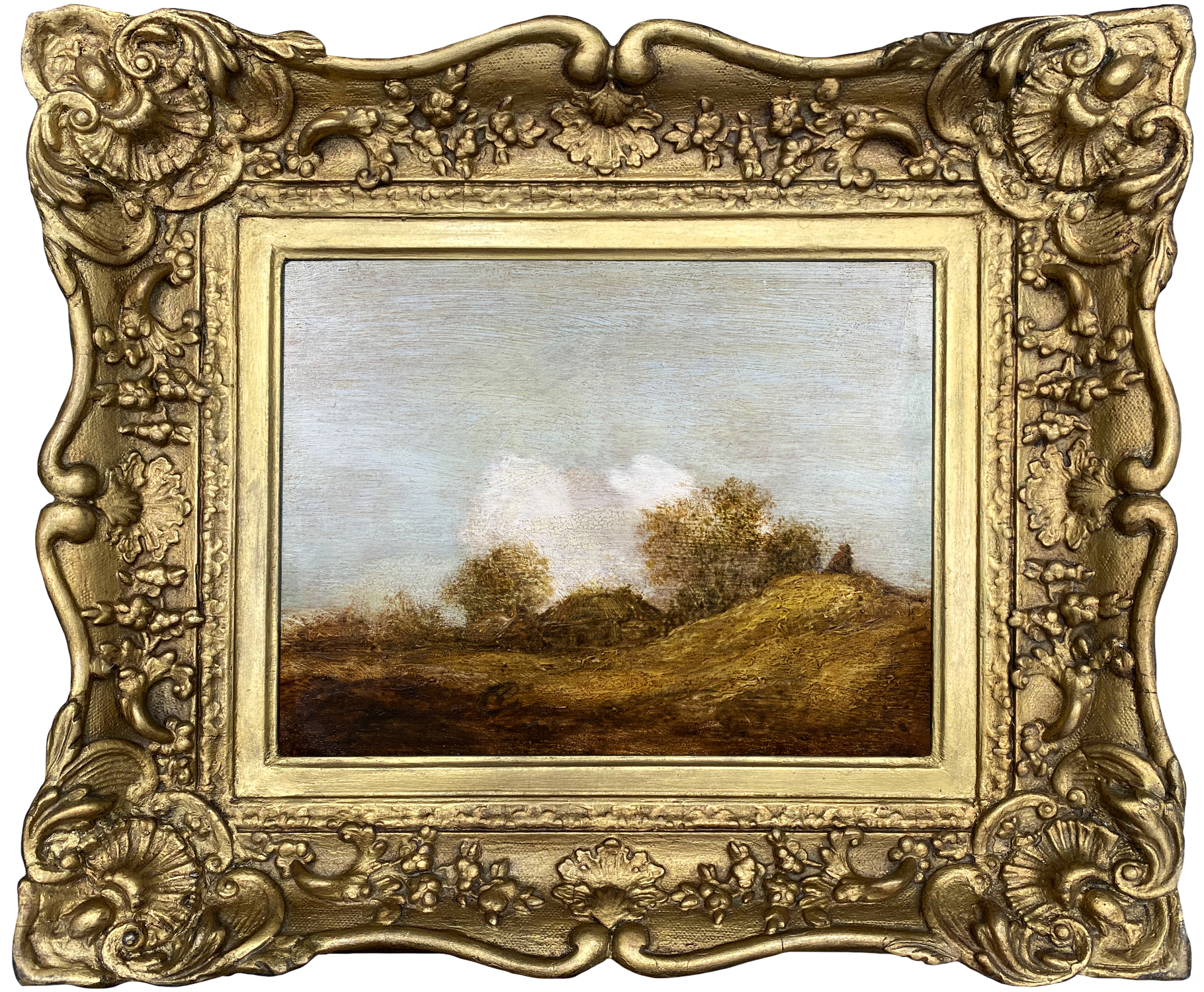
How can we help?
If you have a frame or painting in need of care, please contact our specialist team for advice today.
To make contact please email us via [email protected] or call 0207 112 7576

 Above: a detail from View of Haarlem and the Haarlemmer Meer by Jan van Goyen, 1646
Above: a detail from View of Haarlem and the Haarlemmer Meer by Jan van Goyen, 1646 Above: a detail from Grainfields by Jacob van Ruisdael, 1660s
Above: a detail from Grainfields by Jacob van Ruisdael, 1660s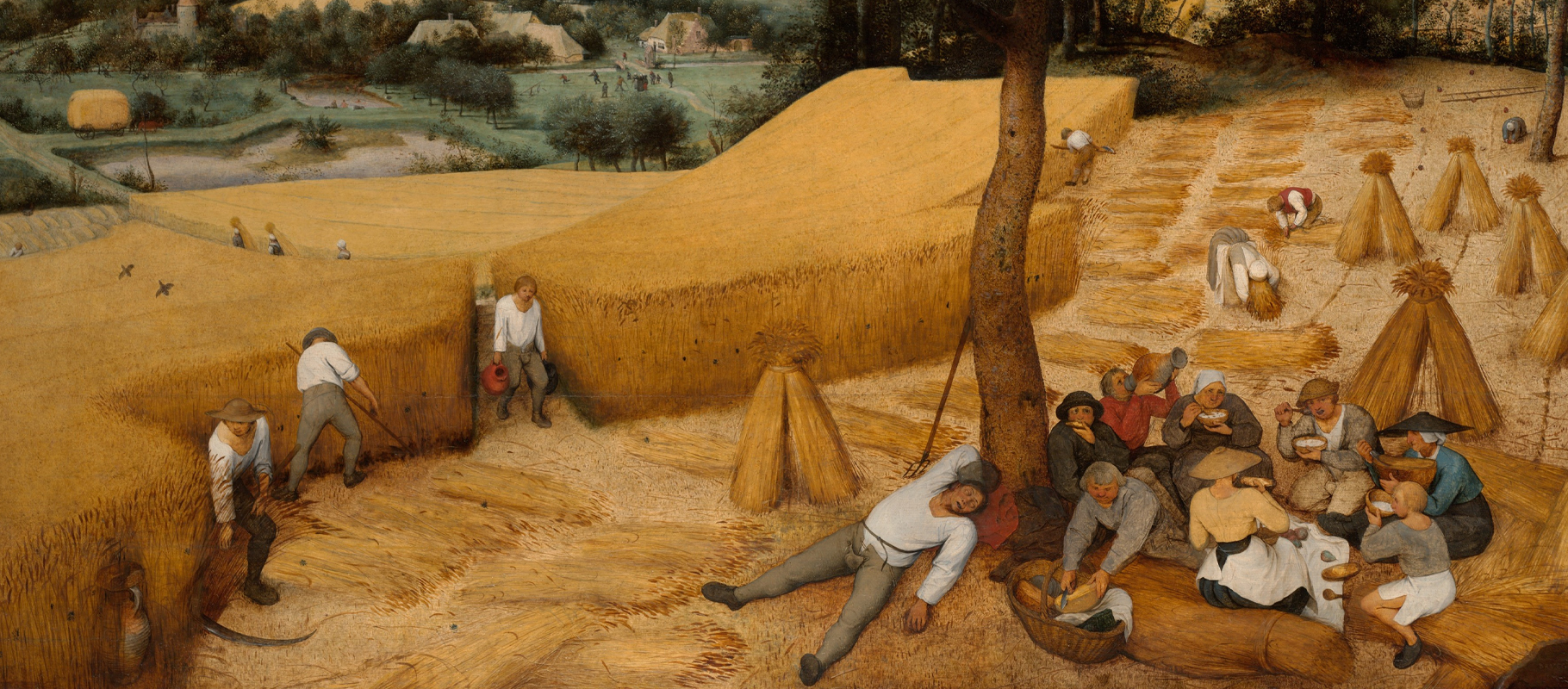 Above: a detail from The Harvesters by Pieter Bruegel the Elder, 1565
Above: a detail from The Harvesters by Pieter Bruegel the Elder, 1565 Above: Drawing the Eel by Salomon van Ruysdael, 1650s
Above: Drawing the Eel by Salomon van Ruysdael, 1650s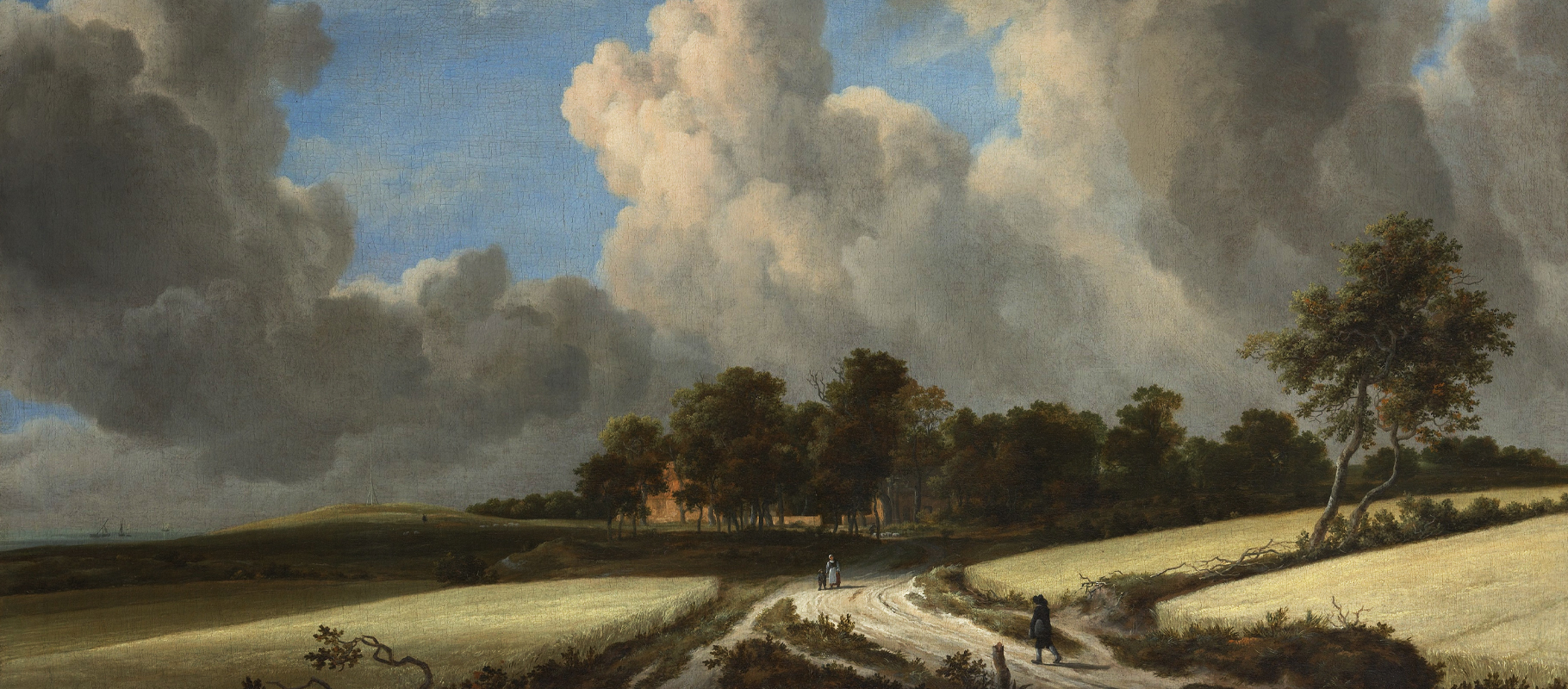 Above: a detail from Wheat Fields by Jacob van Ruisdael, 1670
Above: a detail from Wheat Fields by Jacob van Ruisdael, 1670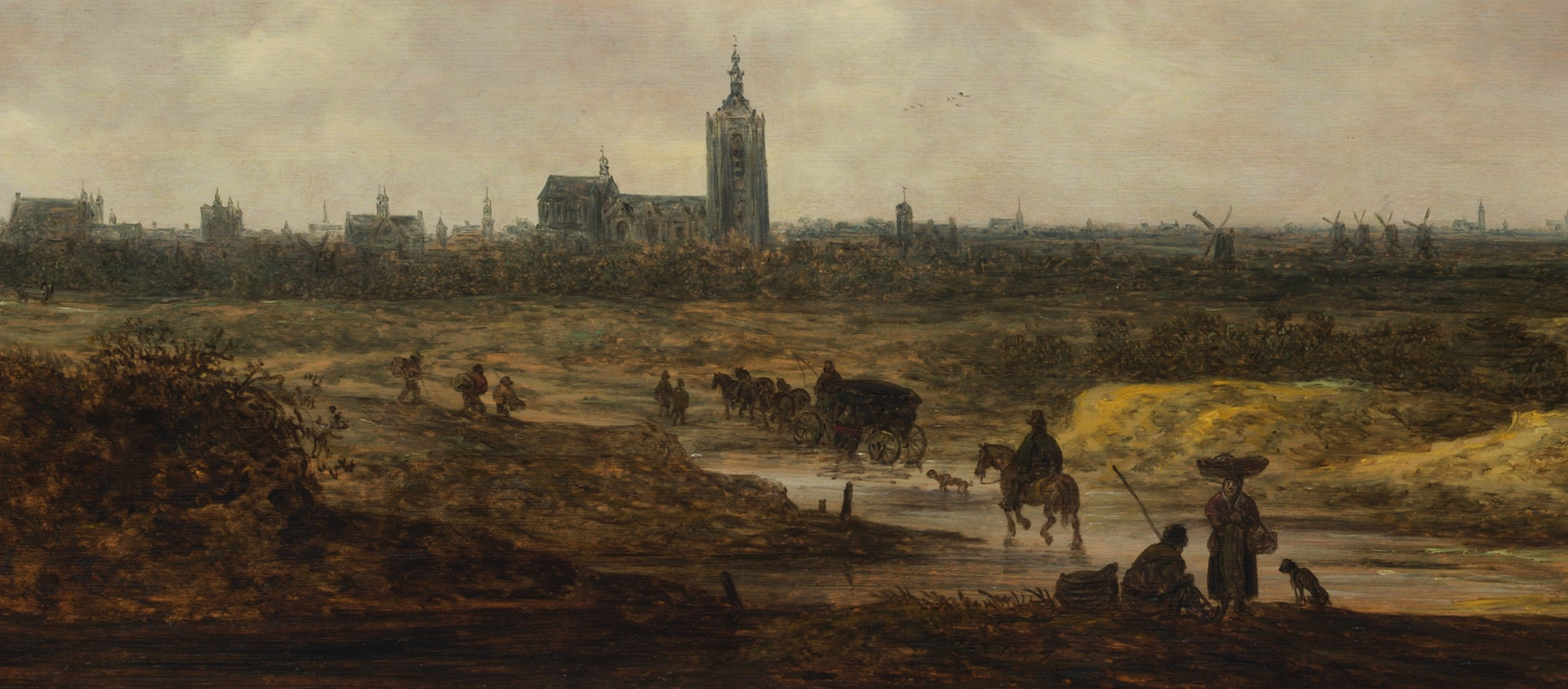 Above: a detail from A View of The Hague from the Northwest by Jan van Goyen, 1647
Above: a detail from A View of The Hague from the Northwest by Jan van Goyen, 1647 Above: a detail from A Panoramic Landscape with a Country Estate by Philips Koninck, 1649
Above: a detail from A Panoramic Landscape with a Country Estate by Philips Koninck, 1649 Above: a detail from the lower left of the painting
Above: a detail from the lower left of the painting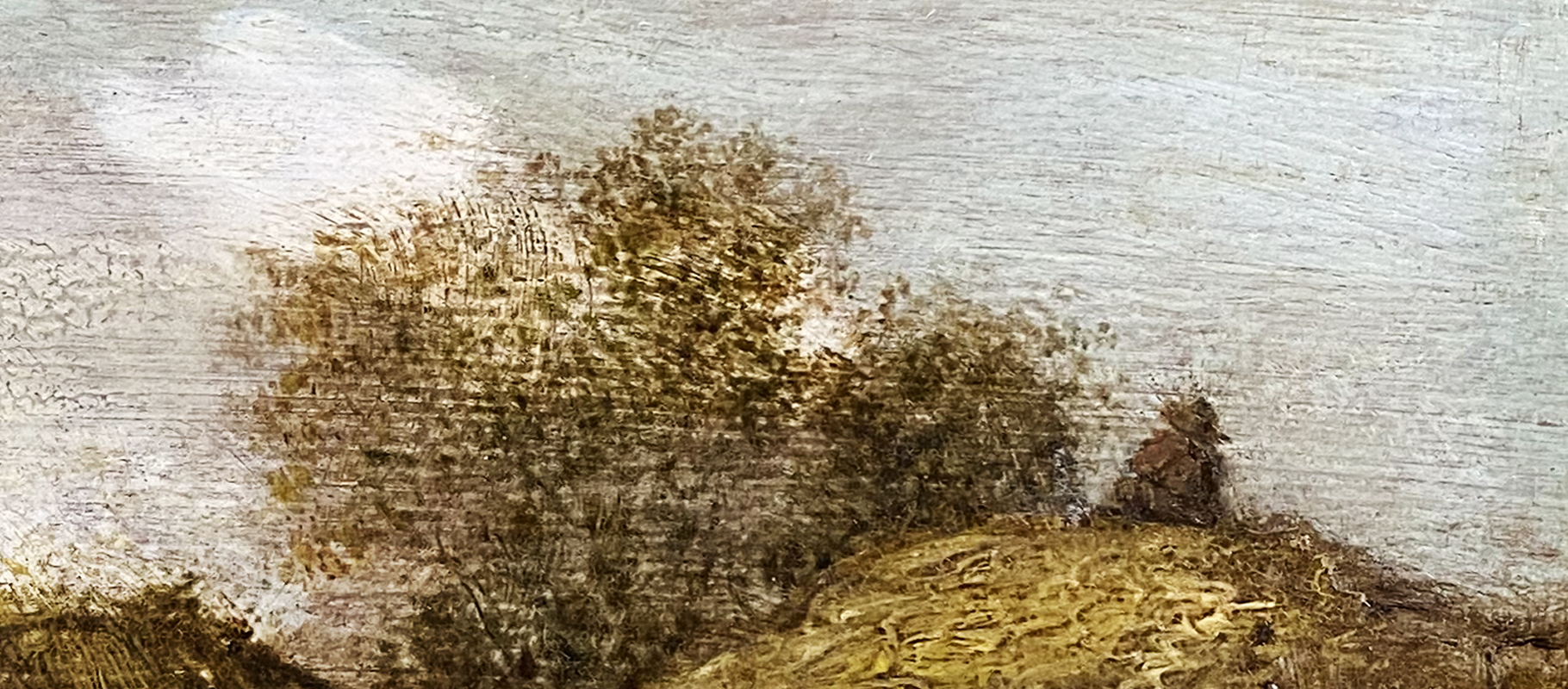 Above: a detail of the figure on a haystack
Above: a detail of the figure on a haystack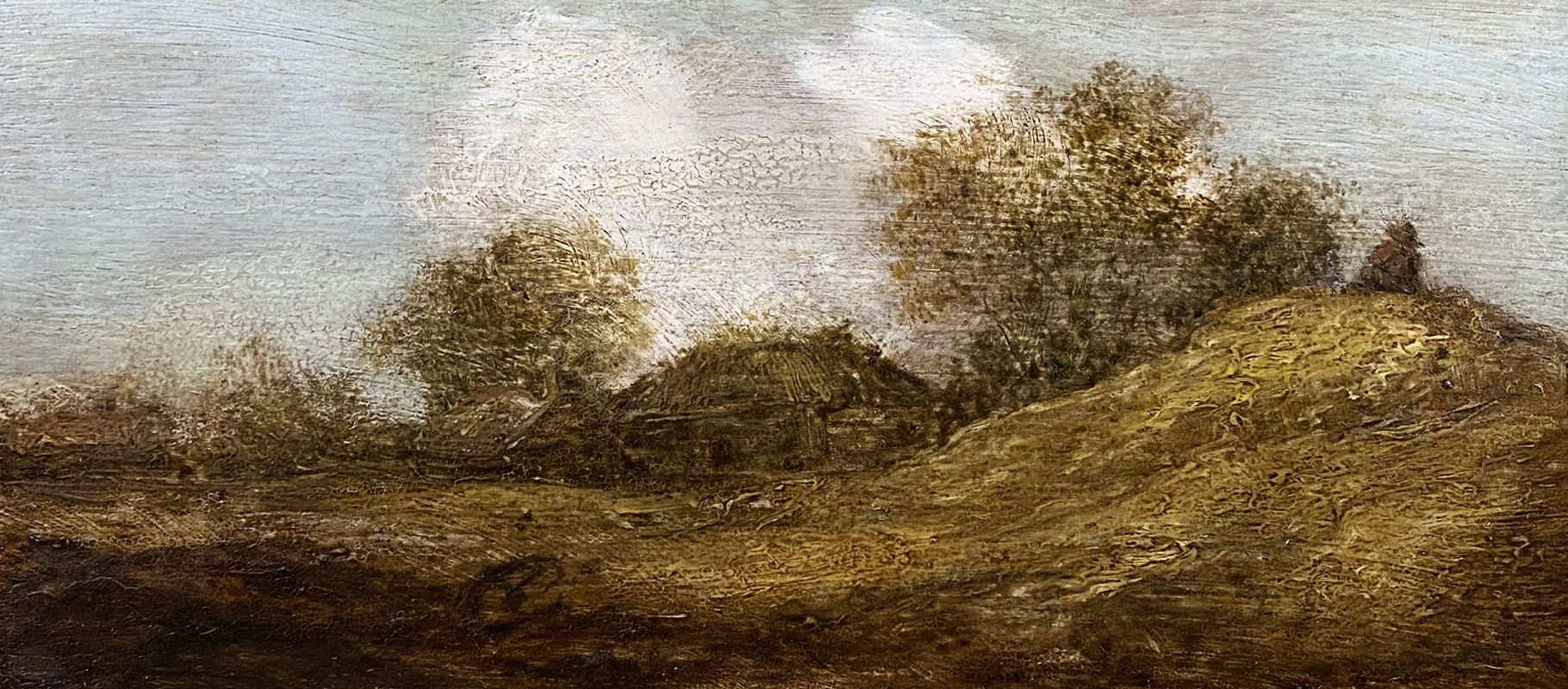 Above: a detail from the panel
Above: a detail from the panel 




